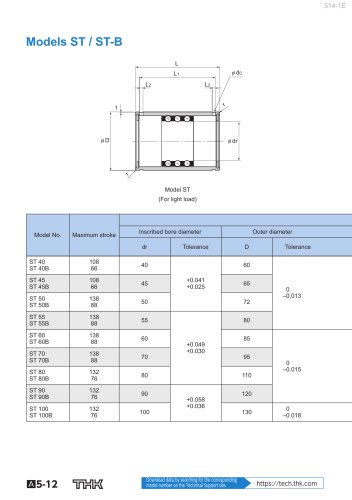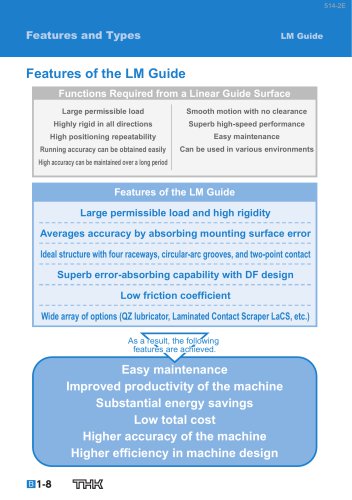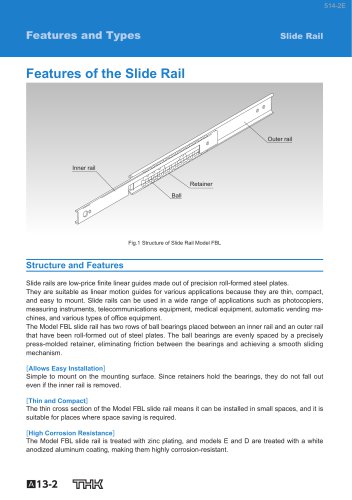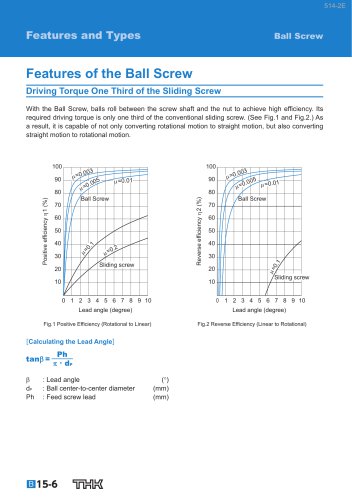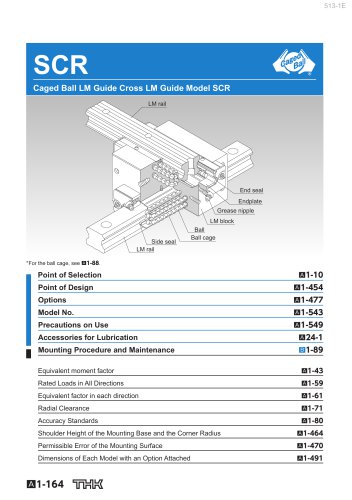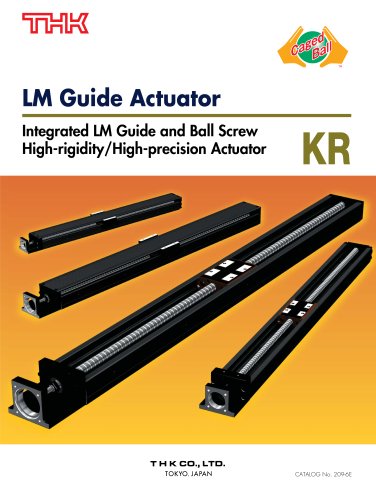Catalog excerpts

Model ST (For light load) Maximum stroke Inscribed bore diameter dr Download data by searching for the corresponding model number on the Technical Support site.
Open the catalog to page 1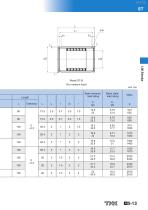
Model ST-B (For medium load) Unit: mm Basic dynamic load rating Basic static load rating
Open the catalog to page 2All THK catalogs and technical brochures
-
Predicting the Rigidity
5 Pages
-
Features of the LM Guide
16 Pages
-
Features of the Slide Rail
1 Pages
-
PCT/PC
40 Pages
-
Models SHS-C and SHS-LC
2 Pages
-
Models SSR-XW and SSR-XWM
2 Pages
-
Models SSR-XV and SSR-XVM
2 Pages
-
SCR
8 Pages
-
LM ACTUATOR GL
20 Pages
-
HDR
28 Pages
-
RSX
6 Pages
-
Fix Stages
4 Pages
-
Finite Stroke LM Guide EPF
12 Pages
-
LM ACTUATOR GL-N
28 Pages
-
LM Actuator TY
16 Pages
-
Clean-Room Actuator Model CSKR
20 Pages
Archived catalogs
-
Model SSR-XTB
2 Pages
-
Catalogue Caged Ball LM Guide
23 Pages
-
Low Price Actuator Model VLA
16 Pages
-
LM Guide Actuator Model KR
92 Pages
-
Ball Spline Series
24 Pages
-
Cross-Roller Ring Series
28 Pages
-
High-temparature LM Guide Series
28 Pages
-
Model HR Separate Type
20 Pages
-
LM Actuator Model TY
16 Pages
-
Guide Ball Bush LG
8 Pages
-
Limited-stroke LM Guide
12 Pages
-
LM Actuator Model GL-N
28 Pages
-
RoD Actuato
12 Pages
-
Product Ordering Guide
8 Pages
-
LM Guide Actuator KR
68 Pages
Remove all


